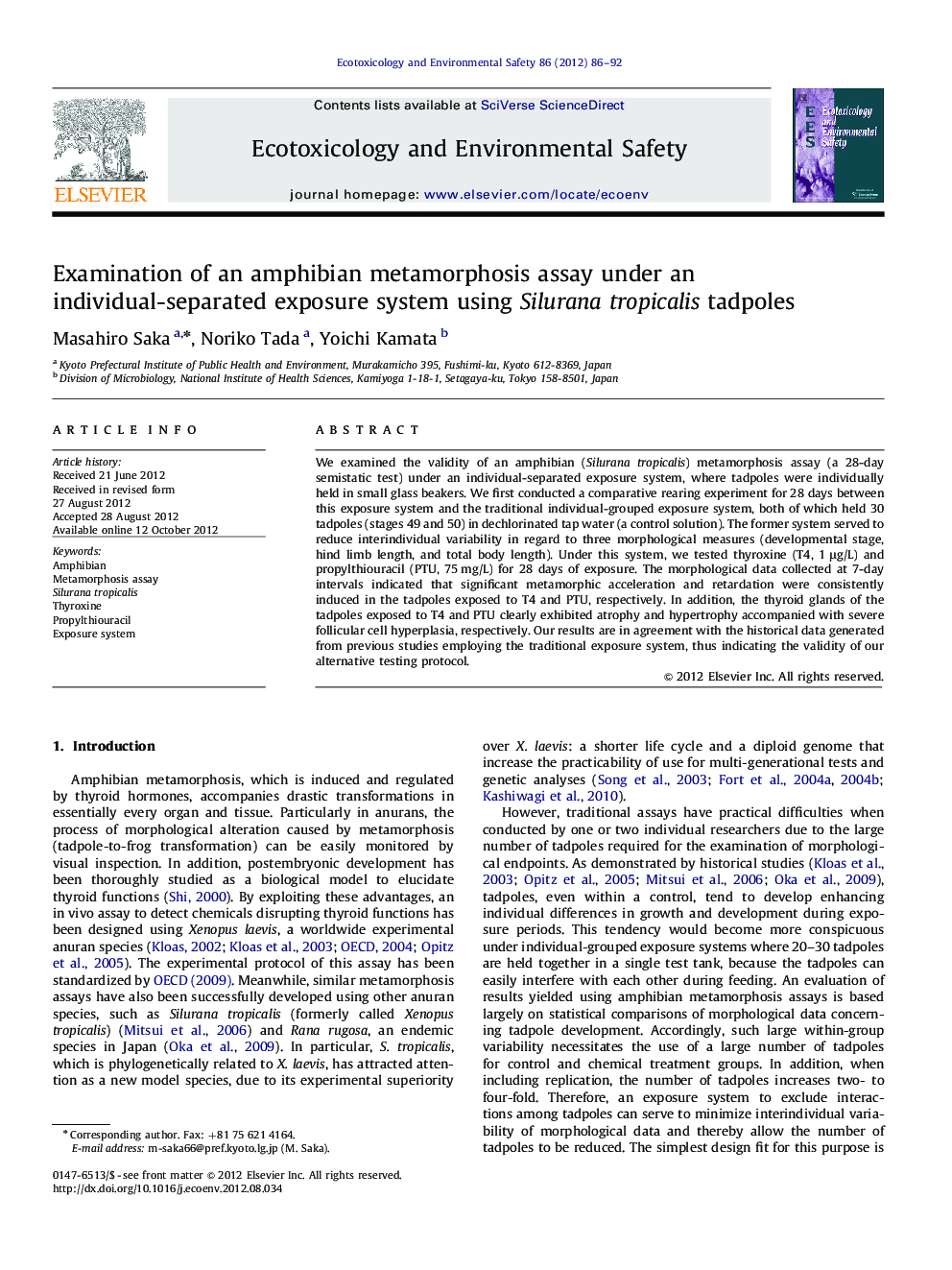| Article ID | Journal | Published Year | Pages | File Type |
|---|---|---|---|---|
| 4420548 | Ecotoxicology and Environmental Safety | 2012 | 7 Pages |
We examined the validity of an amphibian (Silurana tropicalis) metamorphosis assay (a 28-day semistatic test) under an individual-separated exposure system, where tadpoles were individually held in small glass beakers. We first conducted a comparative rearing experiment for 28 days between this exposure system and the traditional individual-grouped exposure system, both of which held 30 tadpoles (stages 49 and 50) in dechlorinated tap water (a control solution). The former system served to reduce interindividual variability in regard to three morphological measures (developmental stage, hind limb length, and total body length). Under this system, we tested thyroxine (T4, 1 μg/L) and propylthiouracil (PTU, 75 mg/L) for 28 days of exposure. The morphological data collected at 7-day intervals indicated that significant metamorphic acceleration and retardation were consistently induced in the tadpoles exposed to T4 and PTU, respectively. In addition, the thyroid glands of the tadpoles exposed to T4 and PTU clearly exhibited atrophy and hypertrophy accompanied with severe follicular cell hyperplasia, respectively. Our results are in agreement with the historical data generated from previous studies employing the traditional exposure system, thus indicating the validity of our alternative testing protocol.
► We developed an amphibian metamorphosis assay with a light burden on testers. ► The protocol is based on an individual-separated exposure system. ► This system served to reduce variability in tadpole growth and development. ► Using this system, thyroxine and propylthiouracil were successfully tested. ► Our results agree with historical data, showing the validity of our assay protocol.
